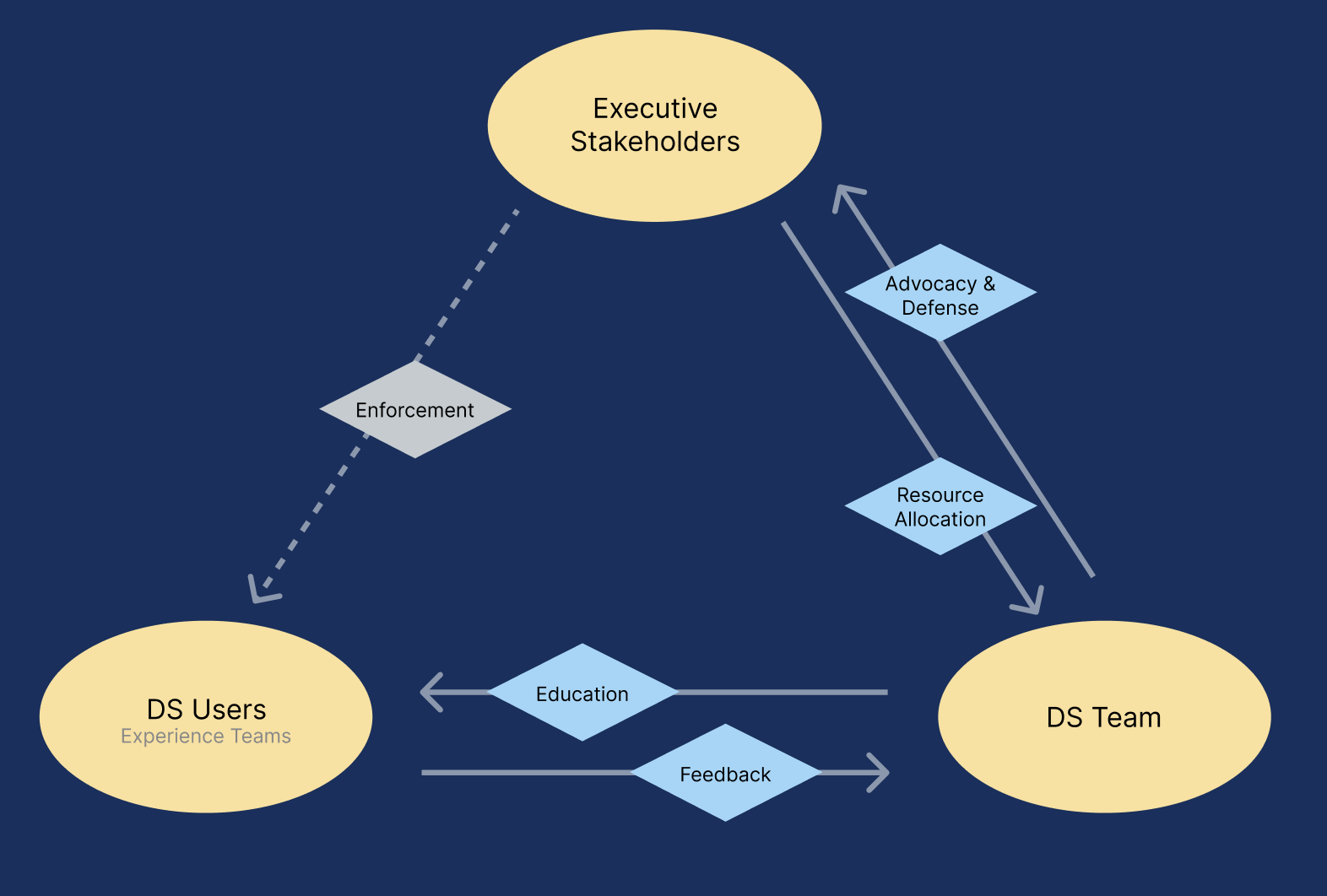Organizational Challenges in Company Adoption of Design Systems

Project Overview: Large companies often offer a large number of consumer products. Google, for instance, manages many services, including Gmail, Youtube, and Google Drive. Despite being different products maintained by different divisions, they provide consistent visual languages and user experiences, effectively reflecting Google’s company branding. All of this is made possible by Material Design, Google’s design system.
As with Google, large companies across various sectors have been widely adopting Design Systems (DS), and the field has experienced fast growth. DSs consist of centralized collections of reusable components, patterns, and guidelines that help teams design, build, and maintain digital products or experiences consistently and efficiently. In addition to providing consistent user experiences, DSs serve as single sources of truth, fostering collaboration between design and engineering teams and streamlining workflows. Despite their increasing adoption, organizations can find the transition to a new DS-oriented workflow difficult, requiring considerable changes to predefined methods.
Our project seeks to illuminate the field of DS, which, despite its growing prevalence, has seen limited scholarly investigation. Prior HCI research has predominantly focused on public perception and education aspects of DS, with minimal effort directed toward understanding the processes involved during the transition to a new DS-based workflow. By conducting case study interviews with designers and engineers, we hope to learn more about the difficulties they faced during the adoption phase of a DS.
Our research is guided by the following inquiry: What are the main organizational (e.g. cross-team communication) challenges companies face when adopting a design system?